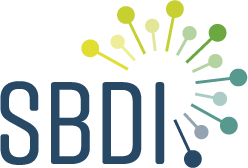Explore and analyze data
SBDI is the national hub for open biodiversity data. The data comes from sources such as monitoring programs, citizen science portals, genetic analyses of environmental samples, natural history collections and research projects. SBDI also provides access to similar data from around the world through GBIF. With SBDI tools and services, you can search, download and analyze this data. The tools span from simple web pages to powerful computing environments.
Environmental degradation, climate change and increasing pressure from agriculture, forestry, and fishing threaten the very existence of much of the planet’s biodiversity. At the same time, it is becoming increasingly clear that the health of our ecosystems, the quality of life of humans, and the very basis of our economy and our subsistence are dependent on biodiversity. Without major societal change, we will never reach the elusive goal of sustainable development.
More than ever, the fate of biodiversity and thereby the fate of the human species, is dependent on our ability to take appropriate action. But this requires knowledge about biodiversity: how is it structured, how does it function, how does it contribute to the health and resilience of ecosystems?
The knowledge gaps are astounding. We do not even know how many species we have on the planet, much less what the majority of them do and how we depend on them. Many groups of living beings, from microorganisms to fungi and invertebrates, still remain largely unknown, even in countries like Sweden.
Technological breakthroughs are now revolutionizing our ability to collect biodiversity data. Some of the new sources come from high-throughput DNA sequencing of environmental samples, camera traps, and continuous sound and video recording in the wild. Increasingly, biologists are faced with big-data challenges. How do we use sophisticated statistical techniques, artificial intelligence and machine learning in making sense of this flood of new data? And how do we combine it with all the data we already have in research that provides answers to the critical societal questions?
SBDI is here to support biologists in tackling these challenges. We provide unified access to new and old sources of biodiversity data. We provide tools to analyze and visualize the data. And we provide the training and support needed to take full advantage of these opportunities in innovative research on biodiversity and ecosystems.
SBDI and its user community contribute an important part of the knowledge platform supporting international policy initiatives, such as the Intergovernmental Science-Policy Platform on Biodiversity and Ecosystems (IPBES). We have already seen IPBES assessments influence national and EU policy, so the potential for appropriate change is clearly there.
For inspiration on potential research uses of SBDI and the resources it provides, see the annual GBIF science review or explore some highlighted SBDI case studies.
Our data and tools
The SBDI data comes from Swedish data providers and from sources such as monitoring programs, citizen science portals, genetic analyses of environmental samples, natural history collections and research projects. Some Swedish providers, such as natural history museums, share data from all over the world. However, many providers are focused on Swedish biodiversity.
The SBDI tools and services allow you to search, download and analyze this data. The tools range from simple web pages to powerful computing environments. Most of the tools are integrated in the Swedish instance of the Living Atlas platform, the SBDI Bioatlas. However, we also provide separate tools for specialized data types or use cases, which are in different stages of integration into the main platform.
SBDI provides access not only to open biodiversity data from Swedish providers but also from a large number of other providers around the world. SBDI includes the national node of the Global Biodiversity Information Facility (GBIF) and is an active member of the Living Atlases Community. GBIF publishes data from more than 1,600 data providers. You can access the data from these communities directly from SBDI tools. You can also use complementary tools developed by these communities.
Read more about the SBDI data and tools.
Use your own tools
If you are proficient in analyzing biodiversity data, you probably want to access the SBDI data and tools directly from your own computing environment. Perhaps you develop your own tools and want to integrate SBDI services in them.
To support these use cases, we provide well-documented web APIs (Application Programming Interfaces) to the SBDI Bioatlas and other SBDI tools. We also provide extensive support for users of the popular R environment for statistical computing and graphics. This includes our own SBDI package for R, sbdi4r2.
